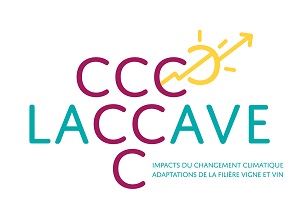Tools and assesment methods

Faced with the great diversity of solutions and levers to respond to the challenges of climate change, methods are necessary to help actors assess alternatives, make choices, combine strategies in time and space.
Strategies can be made up of different measures / solutions of different types.
Assessment tools and methods can be useful for:
- identify and design strategies
- evaluate ex ante strategies
- ex post evaluating and monitoring the development of strategies
Among the existing methods, many can be mobilized to inform the decision in order to take into account and represent the impact of climate change on plants, but also on practices and on the economic and financial dimension. For example a plant growth model that simulates the effect of agronomic practices on the yield and quality of wine or an estimate of the cost-effectiveness of an adaptation strategy. Depending on the question to be clarified, the methods will be implemented at different scales: farm, wine-growing area or other. Territorial scales can be mobilized to answer questions about the orientation of public policies.
These tools and methods can rely solely on scientific and technical tools such as models () or on participatory approaches that involve stakeholders from the value chain and beyond. More and more approaches are being developed using both types of approaches.
The significant uncertainty associated with climate scenarios and other factors makes them a non-negligible aspect to be taken into account in these approaches.
(First version to be developed)
Author: Nina Graveline
Please contact@vineas.net if you would like to contribute
Relations
- Network
- List
- Geolocation
- More
(Master Thesis) Multicriteria and participatory assessment of adaptation strategies in the wine & vine sector
Development of the methodology, assessment file. Case study application to three municipality Montpeyroux, St-Jean-de-Fos, Lagamas
- More
ADAPTING VITICULTURE TO CLIMATE CHANGE: GUIDANCE MANUAL TO SUPPORT WINEGROWERS’ DECISION-MAKING
This report is particularly fitted to the development of local adaptation options to climate change European wine growing regions. It aims to assist winegrowers in building adaptation strategies to ensure the maintenance of wine quality and sustainable production.
- More
French National Research Institute for Agriculture and Environment- INRAE
First ranking research institute in agriculture in Europe, second worldwide agricultural science provider, the INRA conducts researches concerning major society stakes.
- More
INNOVATION Joint Research Unit
l'UMR Innovation vise à produire des connaissances et contribuer aux débats scientifiques et sociétaux sur les processus d’innovation qui participent aux transformations des systèmes agricoles et alimentaires, face aux enjeux globaux, dont le changement climatique
- More
LACCAVE 2.21
Towards integrated and resilient systems to cope with climate change for the grape and wine industry
- More
OmicBots: High-Throughput Integrative Omic-Robots Platform for a Next Generation Physiology-based Precision Viticulture
OmicBots aims to develop an automatic platform to integrate HTP low-cost robotics-assisted smart-photonics sensors, with artificial intelligence and systems biology (in-silico), to better comprehend how field grapevine physiology/metabolism are driven by Genotype x Environment x Management.




